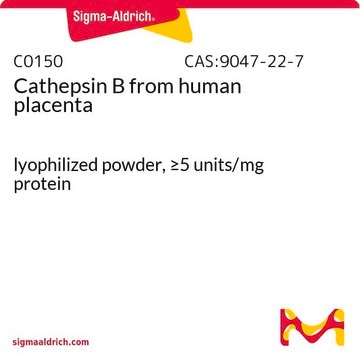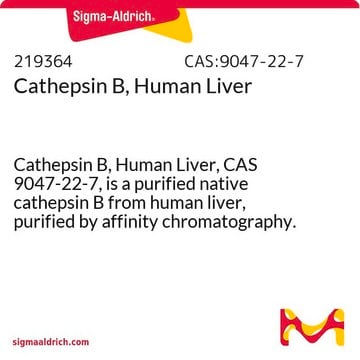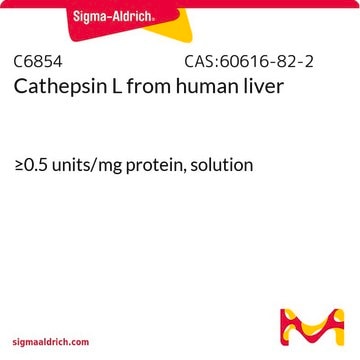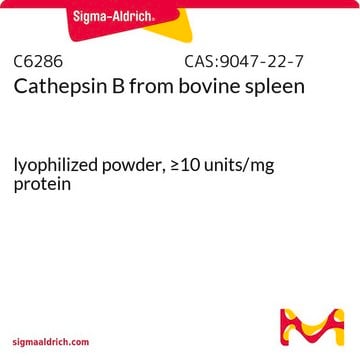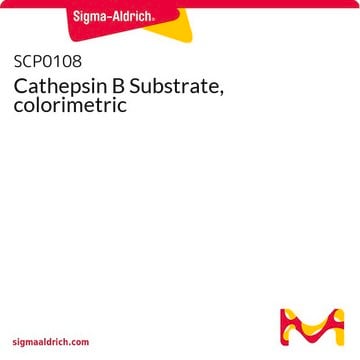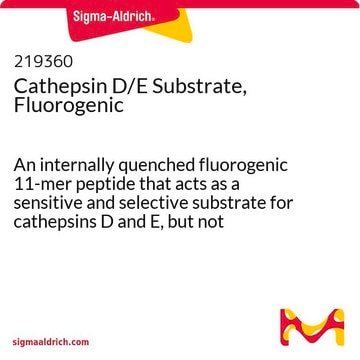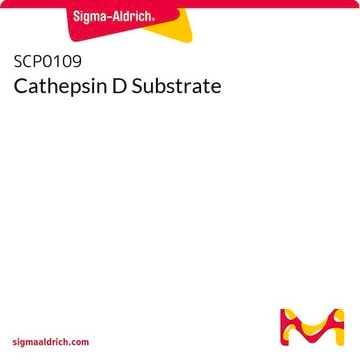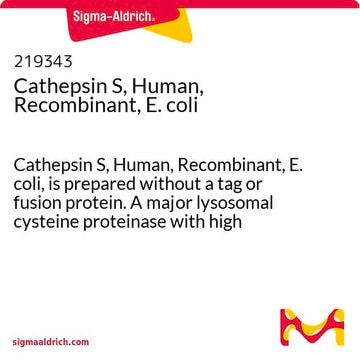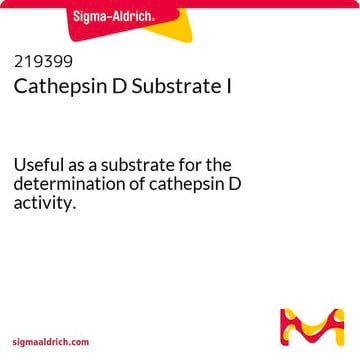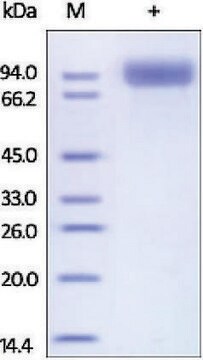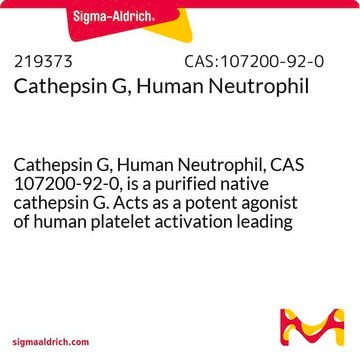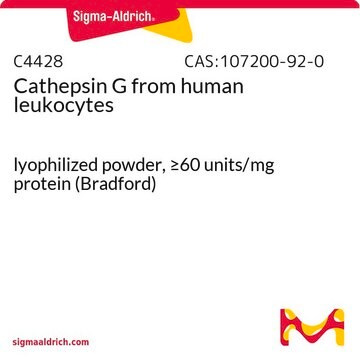C8696
Cathepsin D from human liver
lyophilized powder, ≥250 units/mg protein (E1%/280)
Iniciar sesiónpara Ver la Fijación de precios por contrato y de la organización
About This Item
Número de CAS:
Número MDL:
Código UNSPSC:
12352204
NACRES:
NA.32
Productos recomendados
Formulario
lyophilized powder
Nivel de calidad
actividad específica
≥250 units/mg protein (E1%/280)
mol peso
~45 kDa
color
white
Nº de acceso UniProt
temp. de almacenamiento
−20°C
Información sobre el gen
human ... CTSD(1509)
Descripción general
Cathepsin D is an aspartic protease, which is located in lysosomes. It is involved in protein catabolism and maintains hormone and antigen processing. Cathepsin D is implicated in neoplasia and neurodegenerative changes. It regulates lysosomal proteolysis and endogenous fibrinolysis.
Aplicación
Cathepsin D from human liver has been used:
- in β-secretase activity assay
- for enzymatic degradation of amyloid β 1-42
- in microinjection of human foreskin fibroblasts
Acciones bioquímicas o fisiológicas
Cathepsin D is an endosomal-lysosomal aspartic protease implicated in breast cancer metastasis and Alzheimer′s disease. Lysosomal release of cathepsin D has been found to precede cytochrome c release and loss of membrane potential in apoptotic human foreskin fibroblasts. Cathepsin D levels in PC12 cells increase 12 to 24 hours after apoptosis is induced.
Endosomal-lysosomal aspartic protease implicated in breast cancer metastasis and Alzheimer′s disease. Lysosomal release of cathepsin D has been found to precede cytochrome c release and loss of membrane potential in apoptotic human foreskin fibroblasts.
Otras notas
Contains α, β and γ isoenzymes as observed by isoelectric-focusing.
Definición de unidad
One unit will produce an increase in A280 of 1.0 in 30 min at pH 3.3 at 37 °C measured as TCA-soluble products using acid-denatured hemoglobin as substrate (1 cm light path).
Forma física
Powder containing sodium phosphate buffer salt.
Inhibidor
Referencia del producto
Descripción
Precios
Producto relacionado
Código de clase de almacenamiento
11 - Combustible Solids
Clase de riesgo para el agua (WGK)
WGK 3
Punto de inflamabilidad (°F)
Not applicable
Punto de inflamabilidad (°C)
Not applicable
Elija entre una de las versiones más recientes:
Certificados de análisis (COA)
Lot/Batch Number
¿No ve la versión correcta?
Si necesita una versión concreta, puede buscar un certificado específico por el número de lote.
¿Ya tiene este producto?
Encuentre la documentación para los productos que ha comprado recientemente en la Biblioteca de documentos.
Los clientes también vieron
Platelet membrane beta-secretase activity in mild cognitive impairment and conversion to dementia: a longitudinal study
McGuinness B, et al.
Journal of Alzheimer'S Disease, 49(4), 1095-1103 (2016)
Jeane do Nascimento Moraes et al.
The journal of venomous animals and toxins including tropical diseases, 28, e20220002-e20220002 (2022-11-22)
Cathepsin D (CatD) is a lysosomal proteolytic enzyme expressed in almost all tissues and organs. This protease is a multifunctional enzyme responsible for essential biological processes such as cell cycle regulation, differentiation, migration, tissue remodeling, neuronal growth, ovulation, and apoptosis.
Aspartic Proteinases Physiology and Pathology (1995)
Andrea Gilg et al.
Journal of translational medicine, 19(1), 190-190 (2021-05-05)
Endogenous Peptide Inhibitor of CXCR4 (EPI-X4) is a natural antagonist of the CXC chemokine receptor 4 (CXCR4). EPI-X4 is a 16-mer peptide that is released from human serum albumin (HSA) by acidic aspartic proteases such as Cathepsin D and E.
Microinjection of cathepsin d induces caspase-dependent apoptosis in fibroblasts
Roberg K, et al.
The American Journal of Pathology, 161(1), 89-96 (2002)
Nuestro equipo de científicos tiene experiencia en todas las áreas de investigación: Ciencias de la vida, Ciencia de los materiales, Síntesis química, Cromatografía, Analítica y muchas otras.
Póngase en contacto con el Servicio técnico

